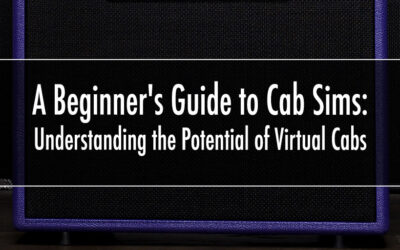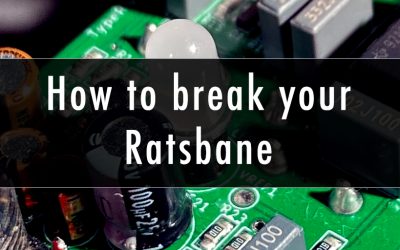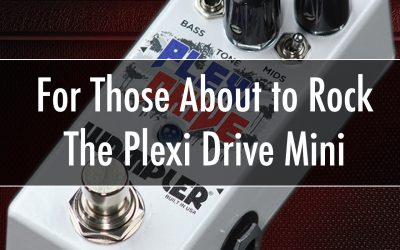
Over the last few weeks or so, I’ve been wiring up my (current) dream pedal board. Those of you who are connected to me on social media are probably bored of it already, as I may have taken some pictures and talked about it a bit, but you know, it’s 2017 and that’s what we do!
Now, when I say my dream board – I mean that “with the materials I have in front of me, what is practical to play in the pubs and clubs around here, and what I can be arsed to program”. Obviously, there are things I would change in a heartbeat should I have unlimited funds (GigRig G2 and associated power modules spring to mind) but let’s not have a “desert island dream board” thing, just a “what is best and most practical for me” piece! We all know the Mobius can’t touch a CE-1, but you just can’t program it and control it via midi!
At the heart of it all is the One Control OC10 ‘crocodile tail loop’. It’s a pretty basic true bypass looper, with 70 presents, midi control and all that. I obtained it about 18 months ago as part of a wider deal and I’ve been sat on it ever since, waiting for the rest to fall into place. The analogue section of my board is extremely obvious, Wampler all the way – I have to tell you now, I am under no obligation at all to use Wampler gear personally, but you know, it’s bloody great so I use it. It’s as simple as that! So, my analogue section is as follows.
Ego Compressor (full size one, don’t have the Mini one – it disappeared into ‘That Pedal Shed’ when I went up with the Bravado some months ago and I’ll never see it again, which is a shame, as I need the space on my board – I could get a wah in there…), Tumnus and Dual Fusion (I order the DF C2 – C1, so the ‘screamer’ hits the front end of C1). The Dual Fusion is separated (whoever had THAT idea is a bloody genius *cough*) so each side can be controlled via the OC10 independently. A Strymon Mobius straddles the Drive section, the pre-gain section sits between the Ego and the Tumnus and the post-gain section directly after, a TimeLine, which then goes into an ‘always on’ TC Electronic Mini HOF and then a Wampler dB+ for clean boost is after. I also have a TC Electronic Polytune 2 mini in the tuner send of the OC10… Right, so that’s that.
So, in a nutshell –
- PRS Brent Mason signature;
- Line6 G30 (wireless);
- TC Electronic Polytune 2 noir;
- OC-10 (loop order… )
- Ego Compressor;
- Pre-gain Mobius (so great for Vibe and Phaser);
- Tumnus – on the edge of dirt, so it adds width and a little high end;
- C2 Dual Fusion – ‘Throaty’ (used primarily as a solo boost);
- C1 Dual Fusion – ‘Fat’ (main overdrive sound);
- Post-gain Mobius (Chorus, flangers, trem, etc);
- TimeLine;
- dB+ (clean boost for solos etc);
- TC Mini HOF;
- Carl Martin ProPower2;
- Fender BDri (running it as a head);
- Custom built (by my friend Rick who plays bass in the band!) 2×12”, loaded with WGS Reaper HP and ET-90. I run the cab vertically with the Reaper at the top, as it sound more natural than the ET-90 but that adds some lovely colour so combined – out the front – it sounds amazing.
The thing about this rig is that it does not represent the best effects you can get to do for each individual position (although I defy you to find anything better in terms of overdrive and compression), but in so far as the best for the space used in the context I’m using it for, definitely. I chose the Strymon stuff as I prefer the through tone to the comparable stuff on the market today, and they have the most options available within. I know a UniVibe, a CE-1, Electric Mistress and a Phase90 will be better, but the Mobius does it all well enough to get away with live, and it still sounds awesome. Same with the TimeLine, the Faux Tape Echo is infinitely better for delay… but patches. I need that control. MiniHOF, sounds perfect for the space it uses (and I don’t do different reverbs so…). So, for me, this is the best rig that fits on my medium sized Temple Board that I can control via midi and a looper.
So, that’s that. Why blog it then? Here is why, I need to tell you about the cables I’m running on this rig and how they have blown me away…
First of all, a little history (you thought you’d got away with it, didn’t you – but you know me, there is always a back story). I stopped playing when I got married and had kids, I’d not gigged for about 5 years before that so I sold all my gear apart from my acoustic and 2 high quality 30’ cables I’d had since 1993. When I got back in to playing, right before I started with Brian, I started to accumulate gear again but never, ever, once considered quality patch cables of being important. Pretty soon I had a decent guitar, a decent amp and some incredible effects… All wired up with ‘£4.99 for 10’ moulded plastic patch cables. This changed on my 40th birthday, a dear friend that I’ve known forever who distributes Evidence Audio cables sent me a few of the SIS plugs and a length of the Monorail cable. I reluctantly tried them and was instantly blow away by the quality of the tone coming from my amp. Yeah, that was an ‘oh shit’ moment as these things aren’t cheap! I started to buy them when I could… I now have my entire board wired up with them – which is about 25 cables of various lengths, using around 24’ of cable!

Here is the thing, this is why I love them – not only do they sound great (and they really do) they are SO easy to make you just wouldn’t believe it. I have experienced many versions of the solderless cable in past, they either are a bitch to make, only 50% of them work first time out, or the plugs are stupidly large or a strange shape – never quite understood that – but these are discrete (they stand out less than 15mm from the socket), OK, so they aren’t a pancake but as far as right angled cables goes, that’s easily in the discrete ballpark! The great thing about the SIS plug is that once you strip the cable back (I do it with a pair of kitchen scissors, no need for all the fancy tools and stuff) you place it in the plug and then turn. If the cable is in the correct state (you have to leave the right amount of core showing and wrap the shielding stuff round properly etc) once you have screwed it in the plug will not come off. So you know it’s connected. You then put the cap of the plug on and boom, you’re away. It currently takes me about 2 minutes (again, with the scissors) to make a cable and with this board I’ve had a 100% “first time” success rate. I’ve not had one that’s not worked… There isn’t a knack to it, you don’t have to have special tools, once you know how much cable to leave bare, you are away. That, if you think about it, for a solderless system is quite incredible.
Now, there are other cables in play here as well… I took a punt, as I’m now an Evidence Audio fan, and order some Forte Cables. Now, these aren’t cheap – they really aren’t cheap. I read all the stuff about them, apparently you need to break them in, they sound best going in a certain direction… I’m always quite dubious when I read stuff like this, but you know, once I plugged it in, the signal was clearer. The sound fuller. They are extremely bendy and flexible (handy as the guys that help us pack away the gear at the end of the night can be a little brutal with gear), extremely strong and as always built like a tank. I played them for 4 gigs and then did a little experiment. I turned it around and it sounded not as clear, not as full… can a cable be directional? I don’t know, but it didn’t sound as good as when I was using it the right way round! There was life missing, top end absent (not missing, just not as ‘there’) and an overriding sense of loss of life and a little power. I thought it might be my accountant trying to justify it the purchase in my head until one of the guys in the band confirmed it as well. The old cables I had all these years, that were quite expensive at the time and guaranteed for life still work, they just don’t sound very good anymore!

So, what started as me wanting to show off my new board, ended up as an advert for Evidence Audio cables (don’t worry, I have no financial stake in them, I’ve payed for most it, and am under no obligation to promote them – so this isn’t a sales pitch). I see so many people getting frustrated with their patch cables, people who can’t solder, people who get large failure rates. My advice to you, get the Evidence Audio SIS/Monorail system, you can’t go wrong. Well, you can, but I’ve only seen it once!
Here is a little video of Dan Steinhardt construction the MonoRail/SIS system cables… (cable making start at 17:50)
Seriously, Evidence Audio cables… there is no better system!



0 Comments